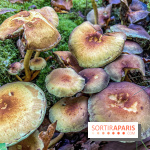With this fine weather, it's always nice to take a walk in the forest, amidst trees sporting theirautumn colors. At this time of year, you'll also find plenty of chestnuts on the forest floor. A godsend for those of you who love this autumn fruit.
But beware: while chestnuts are edible, and even delicious, they are poisonous! Here are a few tips on how to tell the difference between the two fruits and prepare your meals in complete safety.
The Frenchfood safety agency, Agence nationale sécurité sanitaire alimentaire (Anses), warns us of the harmful effects that a chestnut cooked wrongly can cause, and gives us advice on how to recognize edible chestnuts for sure. Indeed, chestnuts " can cause digestive disorders such as abdominal pain, nausea, vomiting or throat irritation. "
To avoid these inconveniences, you need to pick the right fruit. Chestnuts can be recognized by their bogues " brown, bristling with numerous long prickles, and [qui] contains 2 to 3 chestnuts at a time, rather small, flattened and triangular. " Conversely, chestnuts have a bogue that is " thick, green, provided with small, spaced, short spikes, and generally contains a single, larger, rounded chestnut. "
Chestnut trees are most often found in forests, orchards and woods, and have elongated leaves. Chestnut trees, on the other hand, are often planted in cities, and have small, oval-shaped leaves. The fruit you'll find in the city is therefore mostly inedible chestnuts.
To enjoy these pretty chestnuts, try out chef Mélanie Serre's seasonal recipes! And if you happen to come across any mushrooms during this forest walk, here are some tips too.
Mushroom picking: how can you be sure your harvest is edible?
It's one of the pleasures of autumn: strolling through the forest to pick porcini and mushrooms. But as we all know, these foods can be dangerous. How can you be sure that your harvest is safe and edible? [Read more]



 Mushroom picking: how can you be sure your harvest is edible?
Mushroom picking: how can you be sure your harvest is edible?














